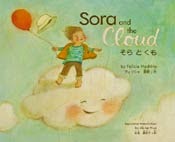May is Asian-Pacific American Heritage Month. I always feel bad about this month. It happens at such a busy time of the year and is often overlooked. May was chosen to mark the anniversary of the first Japanese immigration and the completion of the transcontinental railroad. (The majority of the workers on the railroad were Chinese immigrants.) It also represents such a large area. Asian-Pacific Island includes all of Asia and the islands in the Pacific including New Zealand and the Polynesian Islands. It covers a huge area. (Source)
Although we have no Asian or Pacific Island heritage that I know of, I like to teach Hazel about all the various cultures. I always describe myself as an American mutt since I have quite a mixture of European ancestors and even have some that can be traced to the Mayflower. There is a story in our family history of someone marrying a Native American as well, but I do not know the details. As such I do not identify with any ethnicity besides American and I find it interesting to look at the different ones around. To begin looking into Asian and Pacific Island Heritage we went to the library for books.
The Phillipines
Vietnam
 |
| Source: World Atlas |
General Asian Stories and Picture Books
- A is for Asia by Cynthia Chin-Lee
- Asian Children's Favorite Stories by David Conger, Marian Davies Toth & Kay Lyons
- Asian Holidays by Faith Winchester
- Come Look With Me: Asian Art by Kimberly Lane
- I Dreamed I was a Panda by Debra A. Johnson
- Floating Clouds, Floating Dreams Favorite Asian Folk Tales edited by I. K. Junne
- Moon Magic: Stories from Asia by Katherine Davison
- The Tiger's Whisker and Other Tales from Asia and the Pacific by Harold Courlander
- Folk Tales from Asia by Asian Cultural Centre for Unesco
- Tikki Tikki Tembo and More Stories to Celebrate Asian Heritage DVD produced by Weston Wood Studios, Inc.
Asian Crafts and Animals
- Asian Kites by Wayne Hosking
- Haiku: Asian Arts and Crafts for Creative Kids by Patricia Donegan
- Asian-American Crafts Kids Can Do! by Sarah Hartman
- A Kid's Guide to Asian American History by Valerie Petrillo
- Asian Crafts by Judith Hoffman Corwin
- Monkeys of Asia and Africa by Patricia A. Fink Martin
- Really Wild Animals: Adventures in Asia DVD produced by National Geographic Society
Cambodia
China
 | |
| The Year of the Horse is part of a series of books about the Chinese Zodiac |
The Phillipines
India
Japan
 |
| Sora and the Cloud Review |
Korea
Thailand
Vietnam
Asian-Pacific Cinderella Tales
Wishbones and Yeh-Shen
If you know a good book to learn about an Asian or Pacific Island culture or to help celebrate this month, please list its title and author in this link party and share with us all!! You do not need to link a review or post about the book!!
























